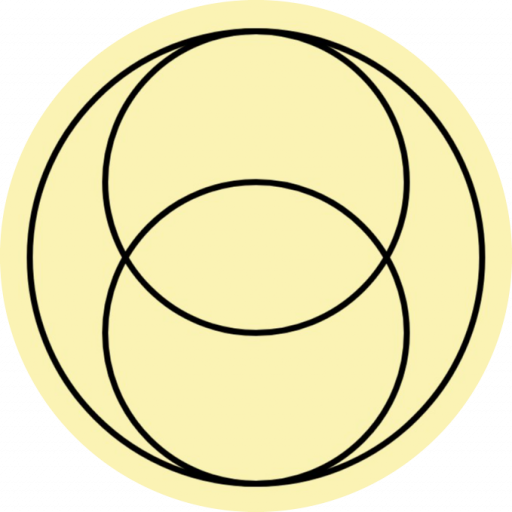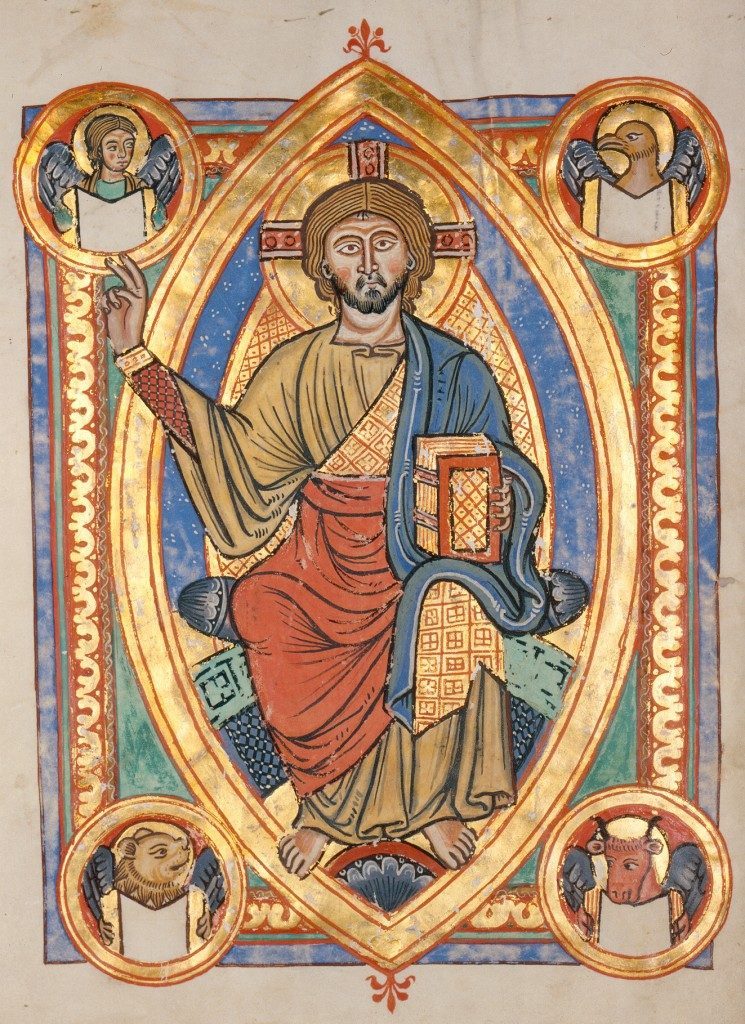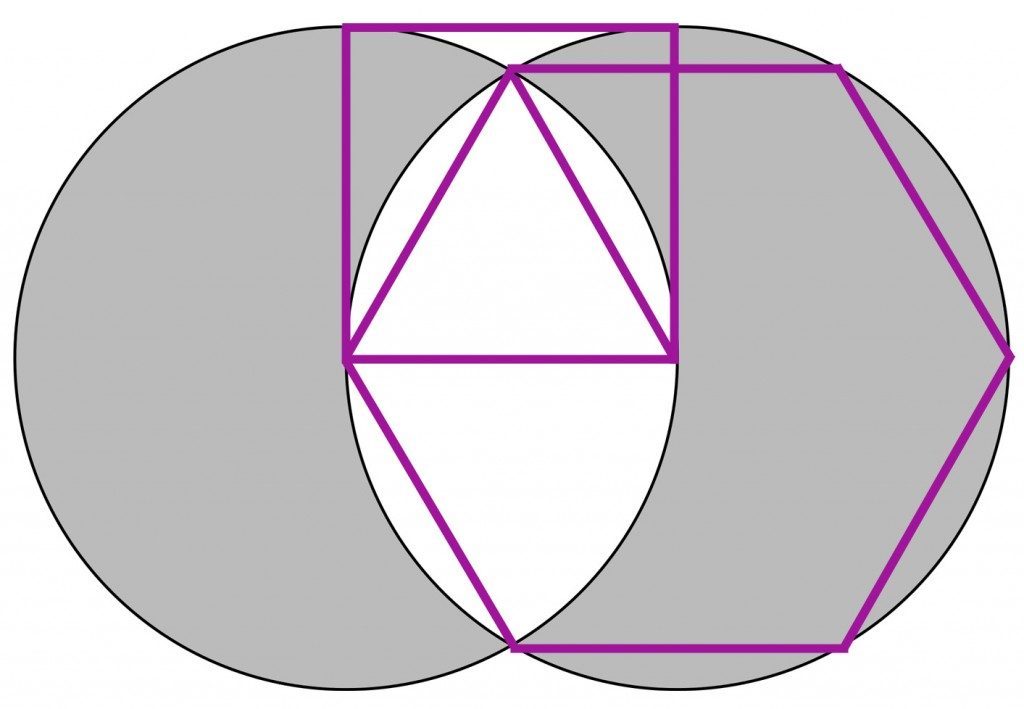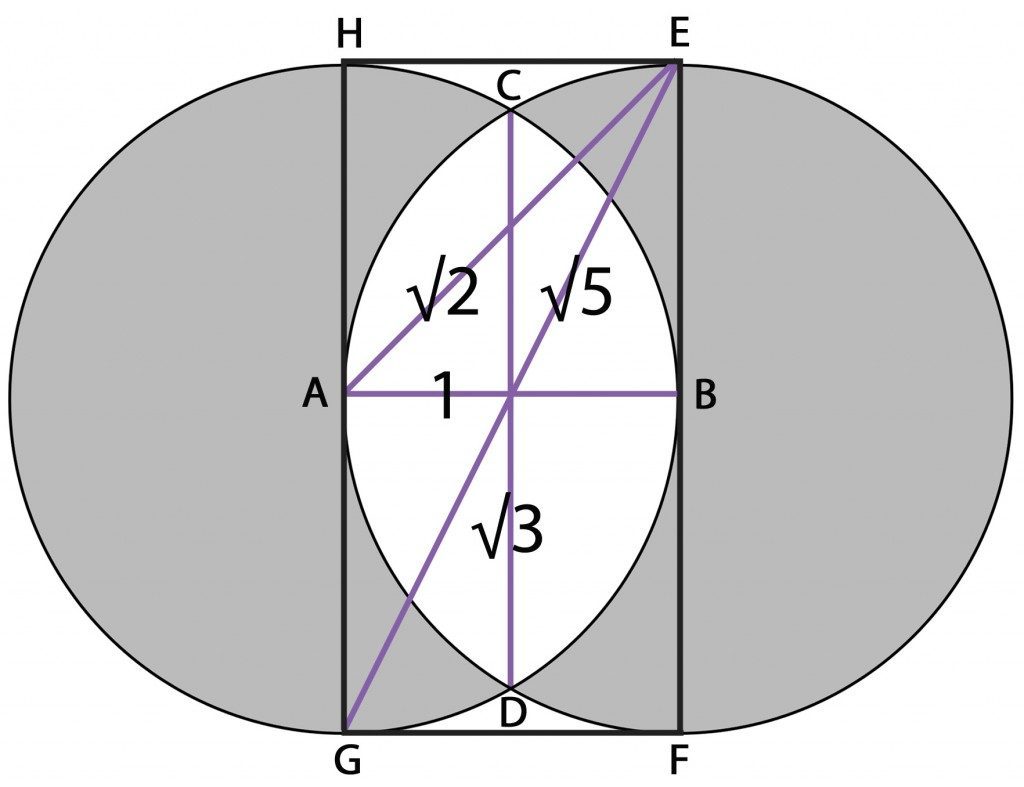
The overlapping circles – an excellent representation of a cell, or any unity in the midst of becoming dual – form a fish-shaped central area which is one source of the symbolic reference to Christ as a fish. Christ, as a universal function, is symbolically this region which joins together heaven and earth, above and below, creator and creation. Jesus as the centre of the Vesica carries the idea of the non-substantial, universal ‘Christic’ principle entering into the manifest world of duality and form. The Piscean Age has been characterized as that of the formal embodiment of spirit,
manifesting a deeper penetration of spirit into form, with a concurrent deepening of the materialization of spirit: the Word becomes flesh. https://www.pdfdrive.com/sacred-geometry-philosophy-and-practice-e184849547.html
The Union of Opposites
Because the vesica piscis is created by crossing two circles, it became a symbol of the union of opposites like heaven and earth, male and female, and spirit and matter. The shape was also known historically as the mandorla (Italian, “almond”), after the shape of the nut. The mandorla was commonly used in Christian art as an aureole around religious figures like Jesus and Mary, to signify their role in bridging the divine and human realms.
The pointed oval also resembles the rough outline of a fish, an animal closely associated with Jesus in Christian thought. https://www.entertheearth.com/seedoflife/
 (13th century illumination of Christ in a mandorla, surrounded by an angel, eagle, bull, and lion, representing the Four Evangelists. Image Source: Public domain, Wikimedia Commons.)
(13th century illumination of Christ in a mandorla, surrounded by an angel, eagle, bull, and lion, representing the Four Evangelists. Image Source: Public domain, Wikimedia Commons.)
The Mother of Geometry
Some believe the vesica piscis is a symbol of the Divine Feminine, with the pointed oval signifying the vulva. Because of its traditional use in mathematics, it is also seen as the mother of geometric shapes, giving birth to the triangle, square, and other regular polygons. Figures derived from the vesica piscis, like the Seed of Life and Flower of Life, may also be used to generate geometric figures.
It also has a unique relationship to several square roots. It was used historically as a geometric proof for the square roots of 2, 3, and 5, as shown below. They are often associated with form themselves. For example, the irrational number phi was generated from the square root of 5 historically:
![]()
Phi is the foundation of the “golden ratio”, a system of proportion often used in nature to guide the growth of plants and animals.
 (The vesica piscis can be used to construct regular polygons like the trianlge, square, and hexagon. Image Source: Adaptation of a public domain image, Wikimedia Commons.)
(The vesica piscis can be used to construct regular polygons like the trianlge, square, and hexagon. Image Source: Adaptation of a public domain image, Wikimedia Commons.) (The vesica piscis has a special relationship to three different square roots. If A to B is 1, the radius of both circles, then C to D is equal to the √3, E to G to √5, and E to A to √2. Image Source: Adaptation of a public domain image, Wikimedia Commons.)
(The vesica piscis has a special relationship to three different square roots. If A to B is 1, the radius of both circles, then C to D is equal to the √3, E to G to √5, and E to A to √2. Image Source: Adaptation of a public domain image, Wikimedia Commons.)
Thus the square root of 3 is linked to the formative process, and this connection is further clarified when one observes the relationship of the Vesica and the square root of 3 to the hexagon, which is the symmetry of order for the measure of the earth, the measure of time (through the 360′ of the Great Circle of the heavens), and also the basic formation of mineral crystals, especially of the carbon bonding patterns which allow for the formation of all organic substances. To regard this principle of formation from a more strictly geometric point of view, we find that while √2 divides the surface of the square, the √3 divides the volume-form of the cube, and we should recall that everything in the created universe is a volume. The formation of any volume structurally requires triangulation, hence the trinity is the creative basis of all form. The cube is the most elementary symbol of the manifest (volumized) formal world. The Vesica is also a form generator in that all the regular polygons can be said
to arise from the succession of vesica constructions. https://www.pdfdrive.com/sacred-geometry-philosophy-and-practice-e184849547.html